https://www.youtube.com/watch?v=Tl4SKZ9BF2c
Alton Brown Makes Homemade Dill Pickles _ Good Eats _ Food Network
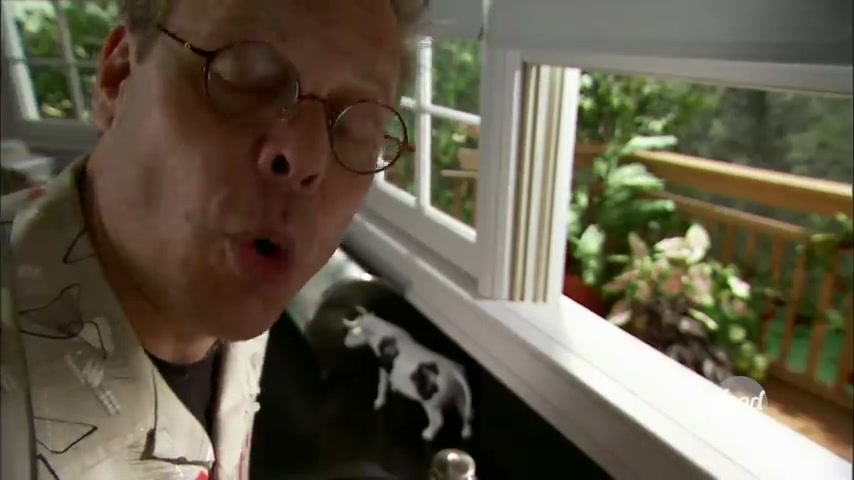
Cleanliness is next to pickle .
So scrub £3 of 3 to 5 inch cubes under warm water while you're at it , trim off any into the stem , they contain an enzyme that can soften cucumbers time to brine and these amounts are important .
Five and one half ounces by weight of pickling salt goes into a one gallon container .
Why ?
Because we're going to dissolve said salt in exactly one gallon of water .
Now , keep in mind that chlorine will kill our little bacterial buddies here .
So either use filtered water , have a filter on this system or you're going to have to use bottled water .
Do me a favor .
Give that a stir every now and then .
Now the most popular pickle flavor time has got to be dill and it comes in two culinary forms .
Here , we have a teaspoon of dill seed which we will use , but we also have one large bunch of dill frons .
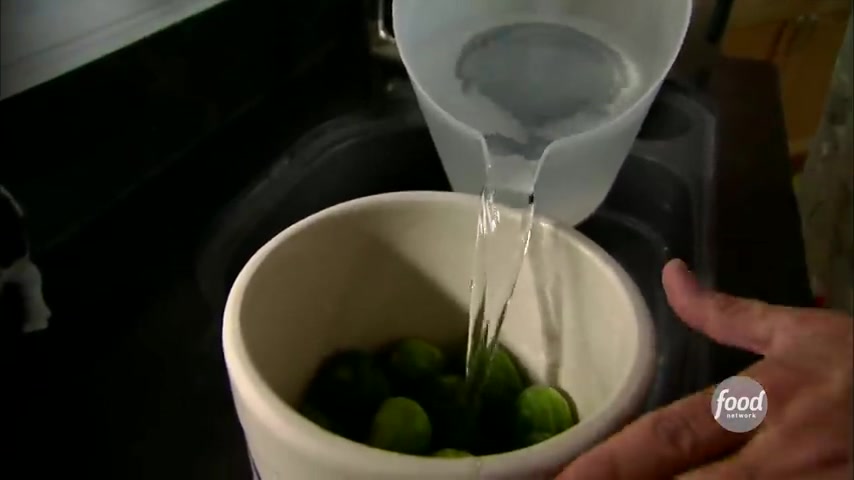
Now , if we want to turn these into kosher dills , we'll need to add garlic .
I have two crushed cloves here and I also like to add a little heat .
So one tablespoon each black peppercorns and red pepper flake now we're ready to build the croc .
I don't want to just dump the cucumbers in .
So I'm gonna lay it on its side and arrange these vertically that will ensure that each one gets its share of the flavor .
I just pour this on to your cucumbers until they float up to about two inches from the top of the croc .
You'll see some of the spices floating .
That's ok .
And we'll stop about there .
We've got plenty of brine left over and some of that is going to go into a zip top bag .
This is going to be our weight , our lid , so to speak , you could do this with regular fresh water .
But what if it were to spring a leak ?
You would be in trouble then because your brine would end up being too diluted .
So make sure that this is good and sealed .
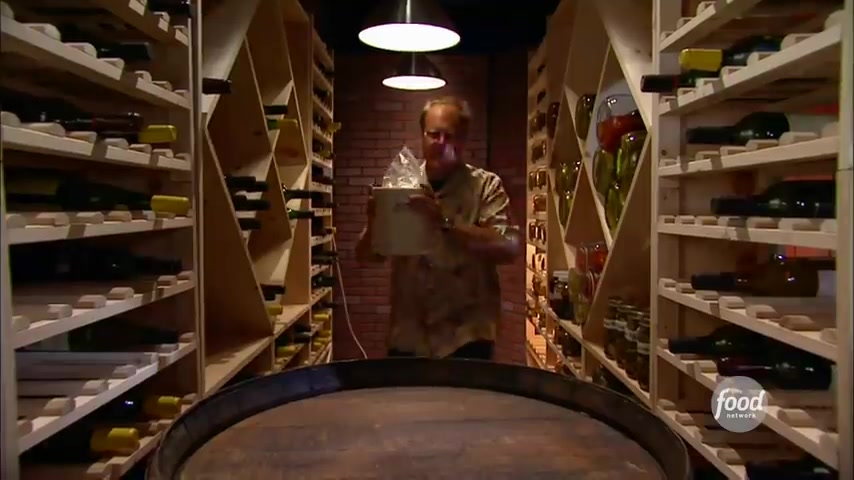
You can throw away whatever brine you've got left there that goes on top and should hold everything down with a little room to spare .
Temperature is a big factor in fermentation .
We don't want to let this get higher than say 75 degrees fermentation would still take place , but it would be really , really slow , which is not something we want to do .
So we're aiming for 68 to 70 degrees tops .
Now , if you do not have your own climate controls , you want cooler like this .
Don't despair .
Just look for any clean spot in your house .
That will maintain that temperature .
If it's a clean corner of your basement , that's fine .
In the winter , I've actually used my , my own garage and in the summer time , uh , when my air conditioning was broken , I put my croc in a cooler , uh , that I just added some ice to , uh , every day or two to the cooler , not to the crop .
That would be a bad thing .
So 68 70 degrees tops for three days .
Three , count them , not two , not 43 .
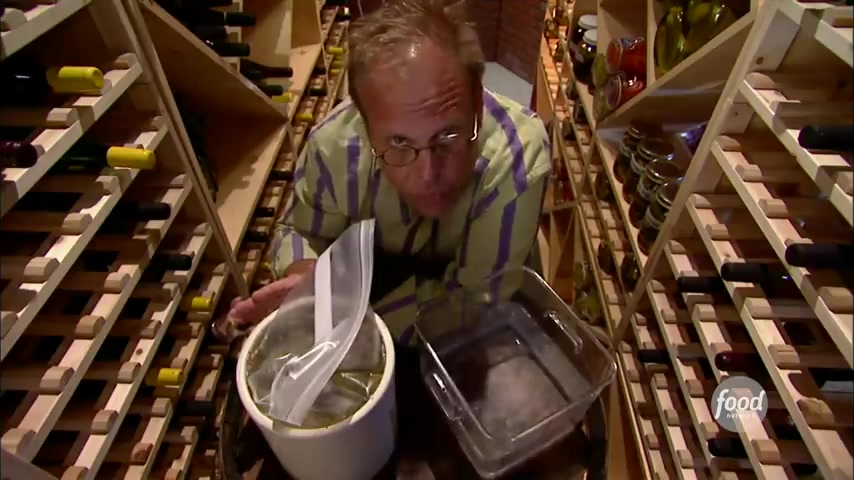
I'll be back now from here on out .
Think of this croc as your virtual pet .
It does not need to be walked or talked to or scratched behind the ears , but it will need to be skimmed of scum uh each and every day or at least every couple of days .
Now , here's how I do it .
Most of the scum will actually be on the bag itself so carefully lift and just dunk that right into a vessel of clean water and it'll wash off then take a spoon and look around the edges and just scrape off anything that kind of looks white and moldy .
It's not actually mold .
At least it shouldn't be every now and then it is , but usually it's just left over stuff byproduct from the fermentation process .
If any of it gets down actually on the pickles , try to get that off best you can there .
Last step , gonna wipe that down with a clean paper towel right along the edge .
Try not to let anything fall in .
You're gonna get a few of the herbs and that's ok .
There we go .
Take a look at your bag .
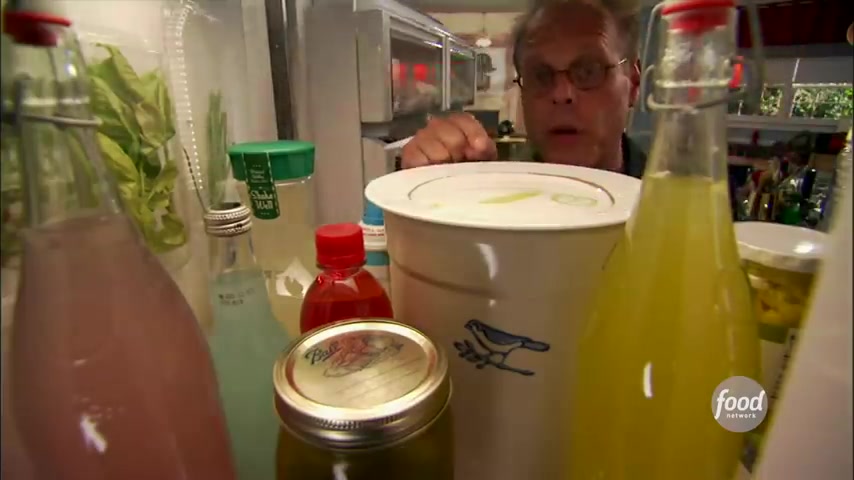
Make sure that it's relatively clean .
There we go and right back in place and make sure that you don't use tap water for that tap water contains chlorine and chlorine will be bad .
Pickles should be mostly fermented in somewhere from 6 to 10 days .
You'll know when mostly Fermin has been reached because the bubbling will stop .
At that point , you've got some choices to make .
You could move your pickles to the refrigerator .
Uh replace the bag with a loose cover like a plate and continue scumming occasionally for about three days .
Uh The cold will put the brakes on the fermentation and you'll have yourself a polish or Hungarian dill pickle , which is a very nice pickle .
Indeed .
If you then move the pickles into a jar , strain the juice and add that cover it , keep it refrigerated , you'll keep them for up to two months if they last that long .
If you know what I'm .
Are you looking for a way to reach a wider audience and get more views on your videos?
Our innovative video to text transcribing service can help you do just that.
We provide accurate transcriptions of your videos along with visual content that will help you attract new viewers and keep them engaged. Plus, our data analytics and ad campaign tools can help you monetize your content and maximize your revenue.
Let's partner up and take your video content to the next level!
Contact us today to learn more.